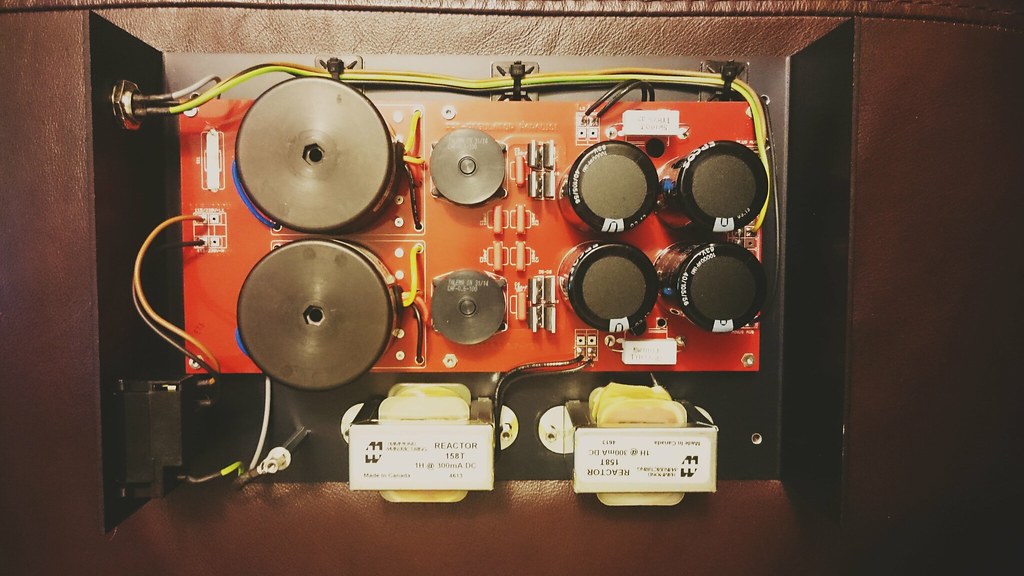Chops54
pfm Member
I've used a HackerCap board on several occasions when I've wanted two positive rails by reversing the diodes and caps on the negative side of the board. However a recent hum problem had me digging around and I realised that reversing these two diodes, whilst giving me two positive rails, only gives half wave rectification per rail even though I'm still using a centre tapped transformer. I've drawn the circuit out from the board so I can see that the rectifiers form the bridge across the two ac terminals. To remedy this I've removed the four diodes from the board and constructed two full wave bridges on thin strips of vero board and installed them upright at the front of the board. I just like someone to confirm that I'm on the right track with this.
I'll post a few pics later.
I'll post a few pics later.



